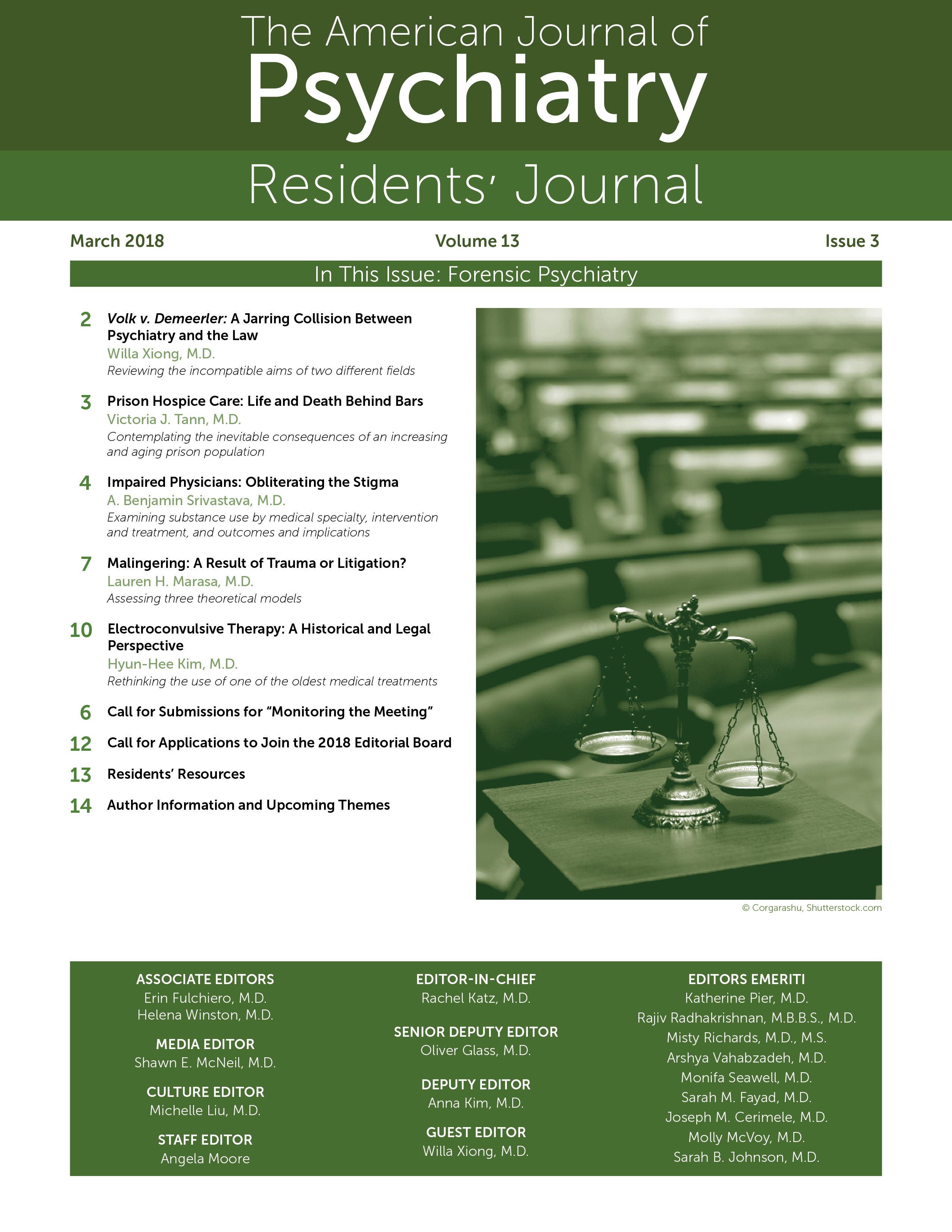In the seminal 1976 case
Tarasoff v. Regents of California, the California Supreme Court ruled that it is the duty of therapists to protect identifiable victims of imminent physical threats made by patients (
1). Following this ruling, a majority of other states recognized a duty to protect the public, which includes warning potential victims, contacting law enforcement, or pursuing hospitalization of the patient (
2). Although the Health Insurance Portability and Accountability Act (HIPAA) specifies the requirement for a "serious and imminent threat" to breach physician-patient privilege (
3), there is no general federal law pertaining to an obligation to protect. Consequently, significant state-by-state variation exists, ranging from the duty being mandated by statute to being allowed by common law to a lack of guidance entirely (
2).
In the ruling on the 2016 case
Volk v. Demeerler, the Washington Supreme Court specified the duty of the state's psychiatrists to protect third parties from a patient's "dangerous propensities," even in the absence of threats or identifiable victims (
4). The case involved a patient diagnosed with bipolar disorder who murdered his girlfriend and her son and then committed suicide. There was no evidence of homicidal ideations or worsening symptoms during the patient's last visit to his psychiatrist, nor did he have a past history of homicidal ideations toward the victims (
4). Nevertheless, the patient's psychiatrist was held liable for not warning appropriately. The ruling was highly contested, since the expansive duty to warn the general public, rather than only identifiable victims, places an unfair burden on clinicians (
5).
A patient's "dangerous propensities," or possible elevated risk of violence compared with that of the general population, is not equivalent to the patient acting out violently. Comprehensive assessments of a patient's words or demeanor, as well as of relevant events, may lead a psychiatrist to believe that a genuine threat is likely to occur and that action should be taken. However, without some evidence, a patient with "dangerous propensities" may engage in violence that a psychiatrist simply cannot predict. The Volk decision does not acknowledge this need for an evidence-based assessment and does not specify when a patient's latent "dangerous propensities" are likely to turn into a serious and imminent threat to another person's safety. In other words, the adjudication is not workable under both clinical care standards and the federal HIPAA standard.
Although the Volk v. Demeerler case was filed in pursuit of justice by seeking damages for an injured party, the decision ultimately hinders psychiatrists from providing effective care. Individual liberty rights are at risk of being infringed, given that psychiatrists may seek involuntary hospitalization prematurely the moment a patient voices suicidal or homicidal ideations. Patients may withhold information during visits in fear of such civil commitment. To avoid liability, clinicians might steer clear of providing care to high-risk patients entirely. Access to mental health treatment could, ironically, be curtailed for those who need it most.
The law may not always align with clinical practice, as in the case of Volk v. Demeerler. The intersection of psychiatry with the legal system is indubitably complex, and necessarily so, given the differing aims of the two fields: justice versus therapeutic care. In this issue of the Residents' Journal, authors address a variety of topics relevant to forensic psychiatry in hopes of providing some insight into these complexities.
